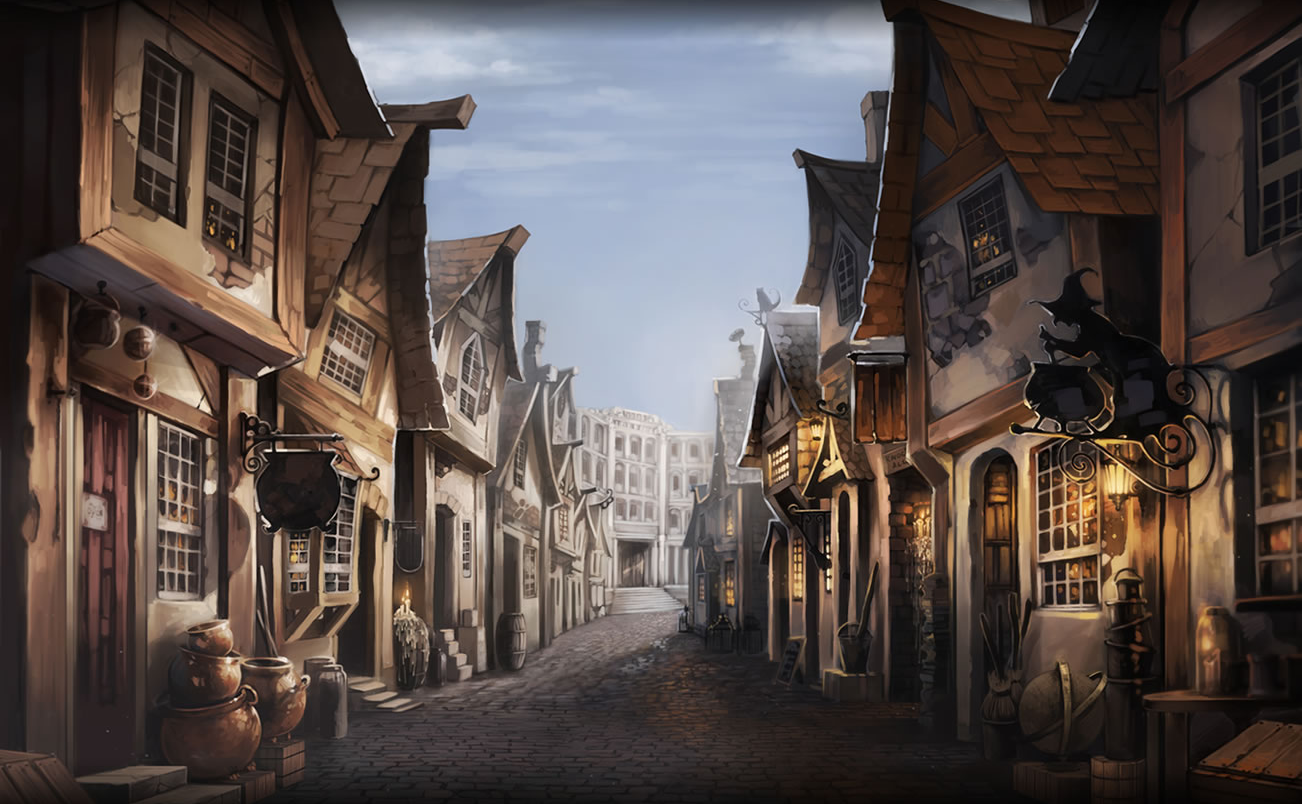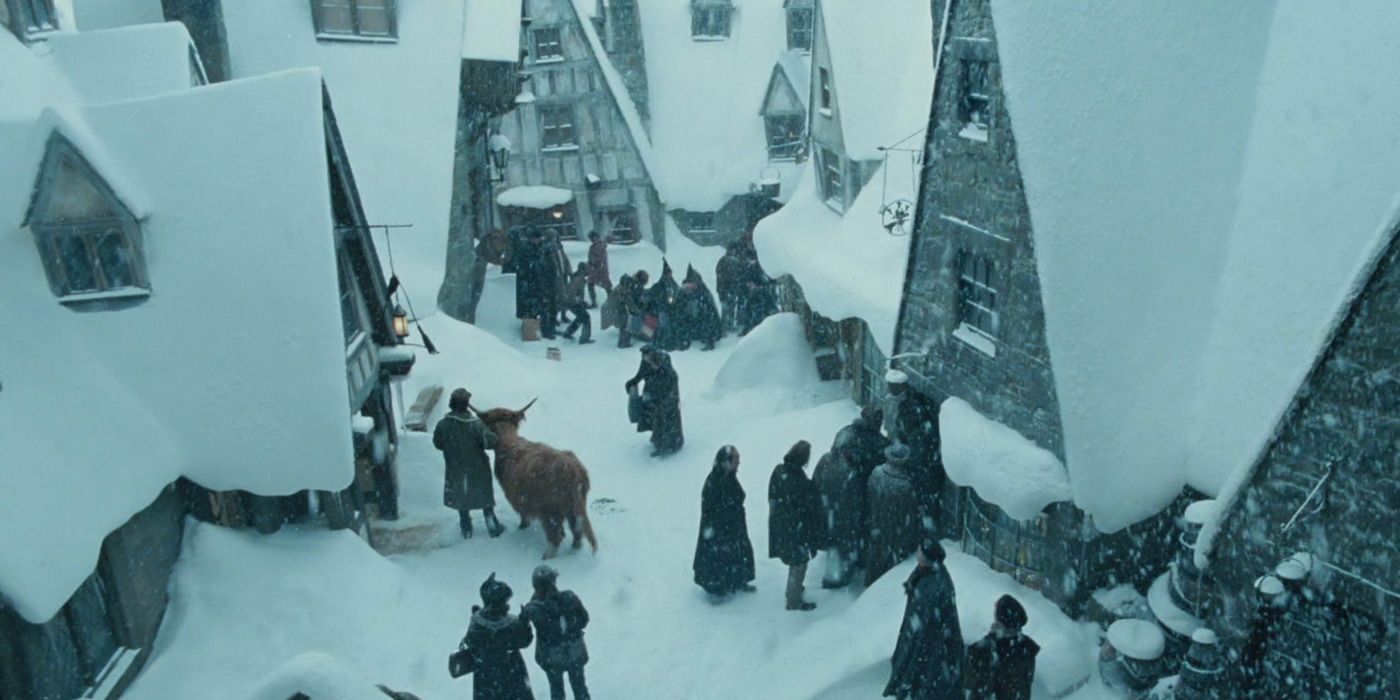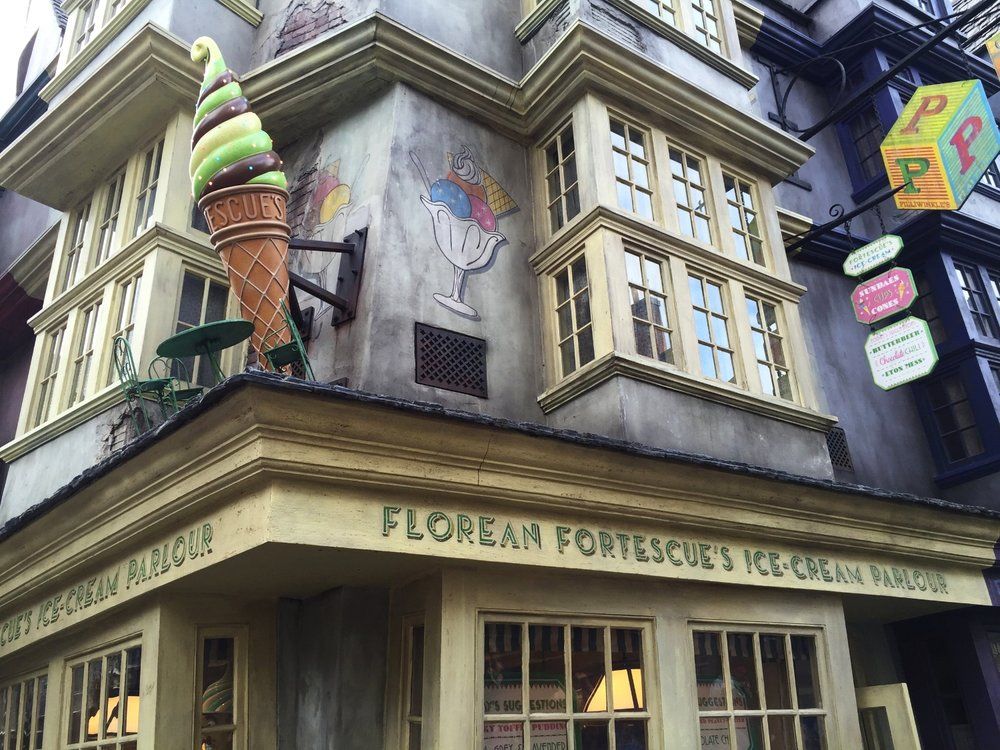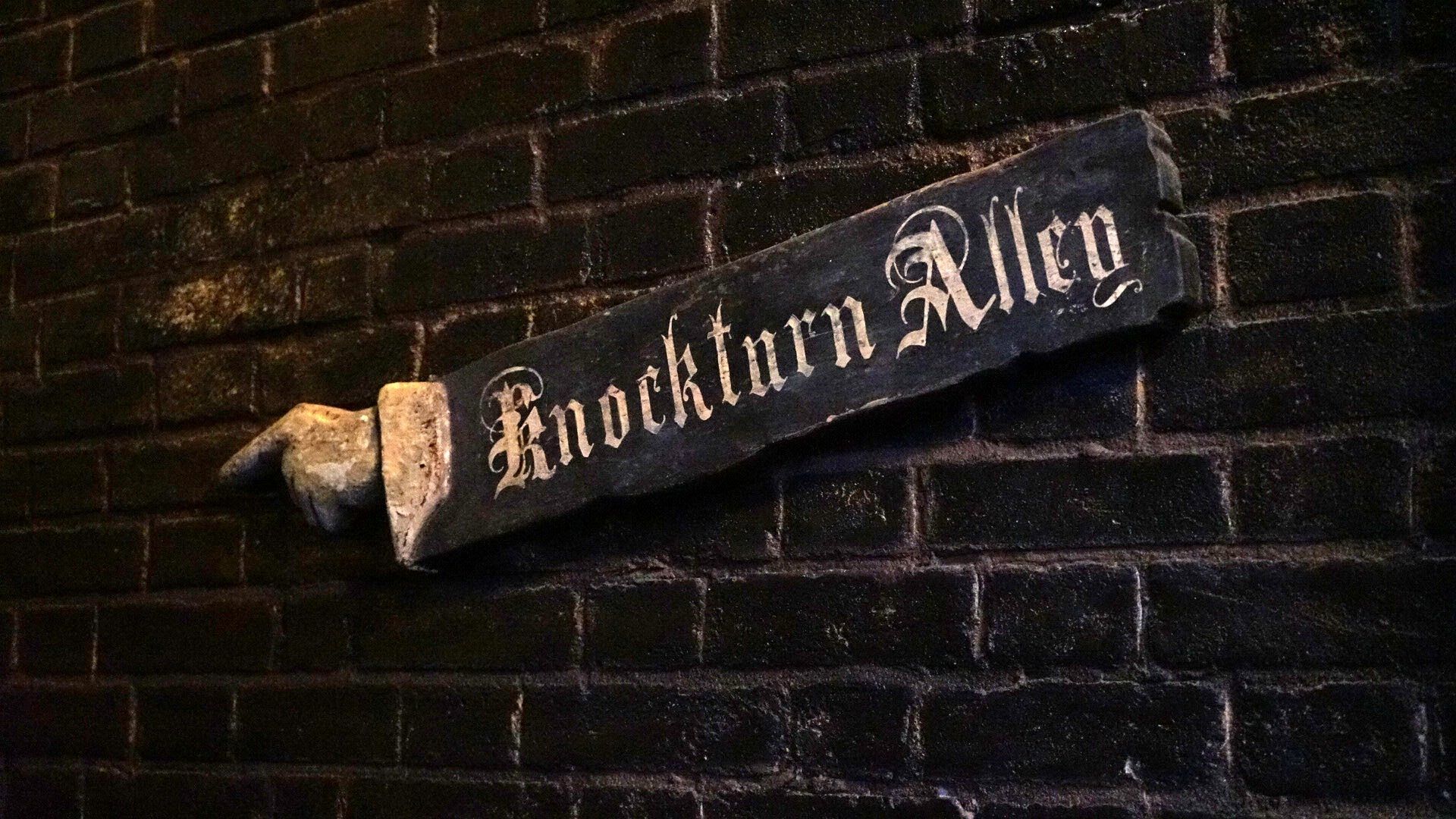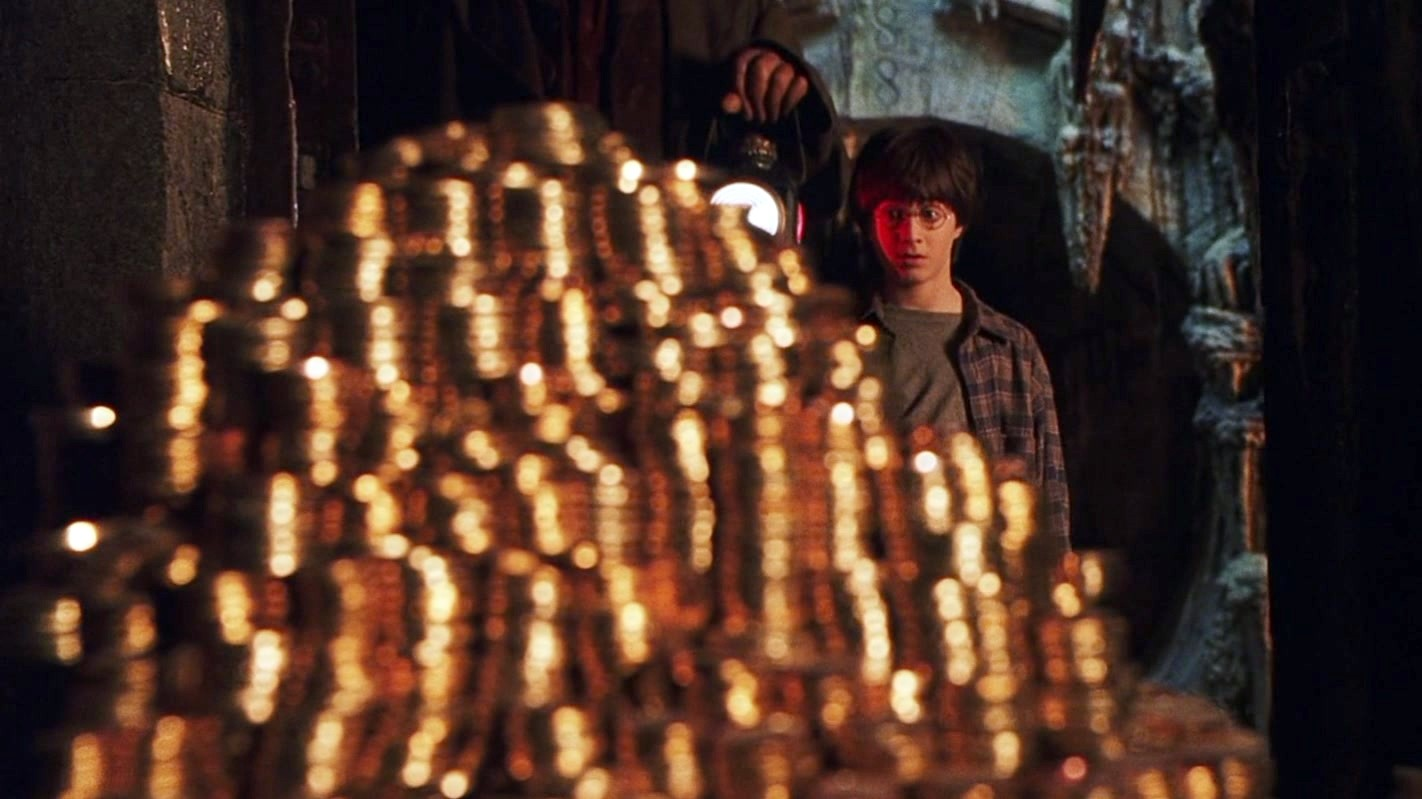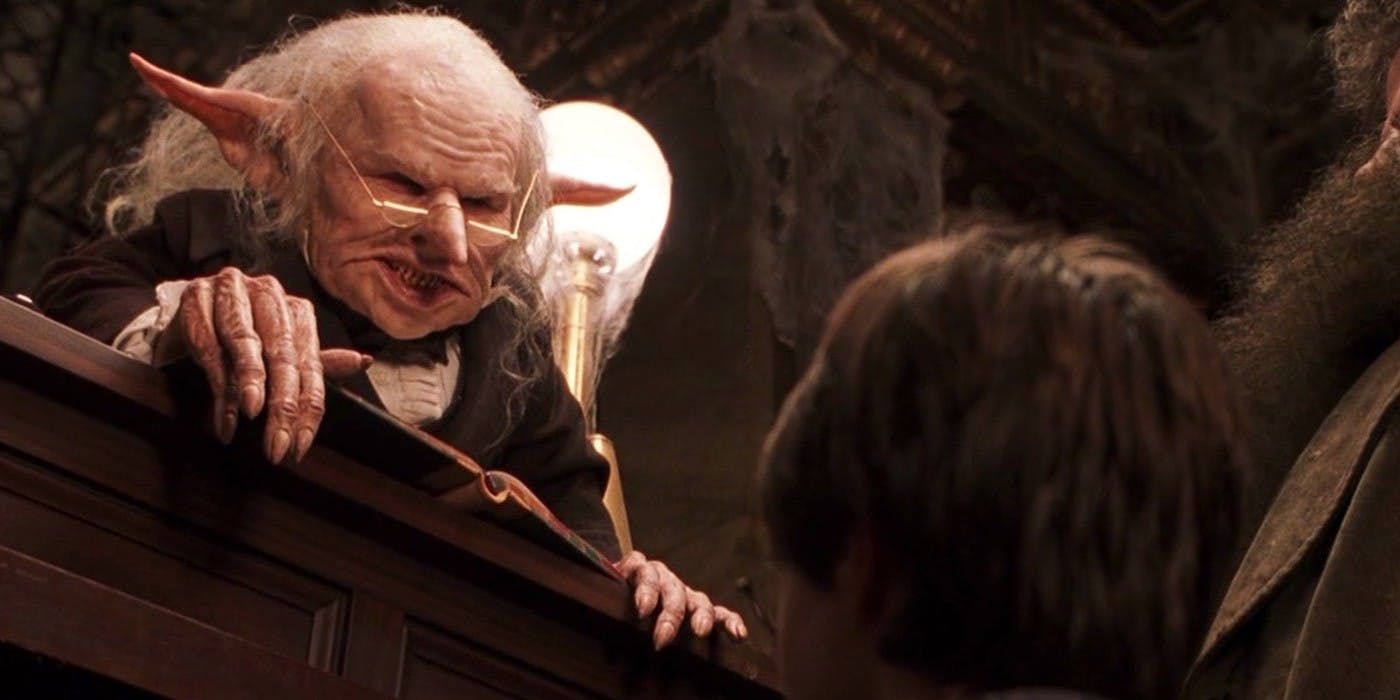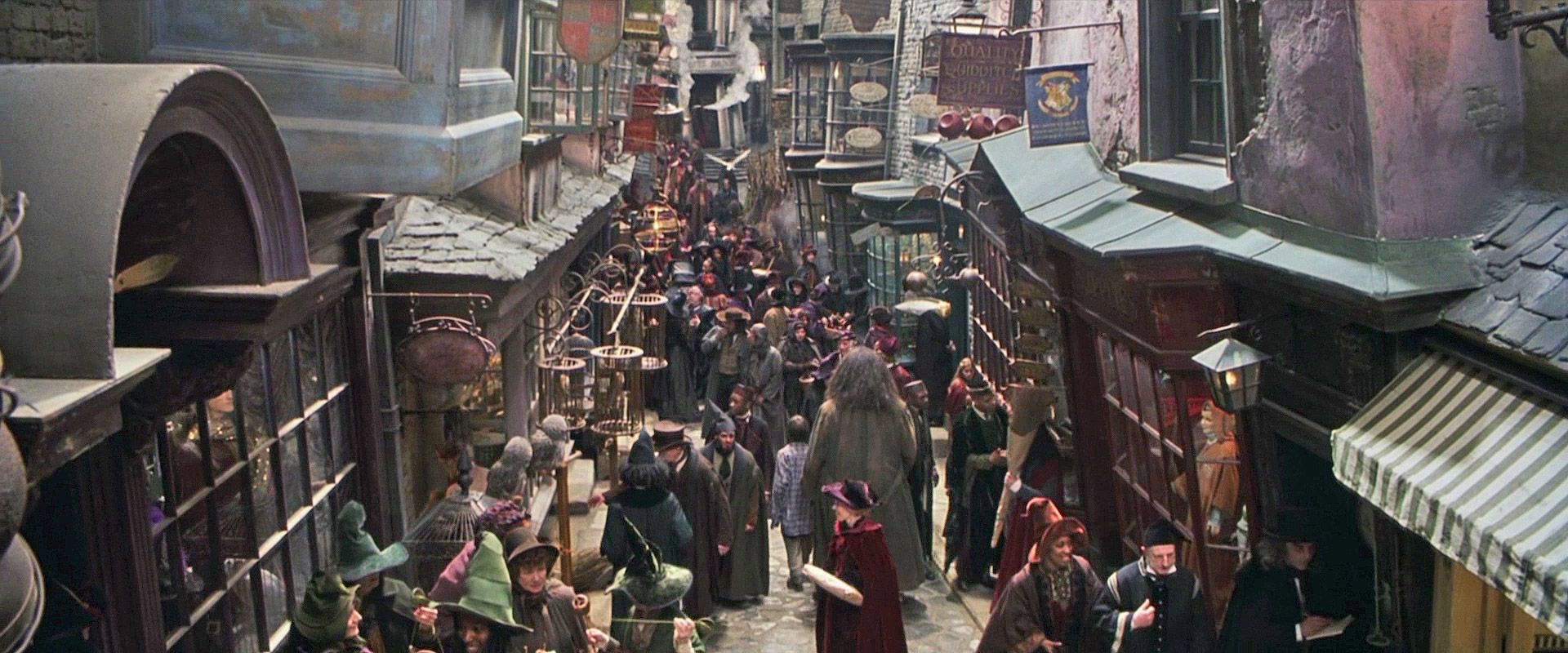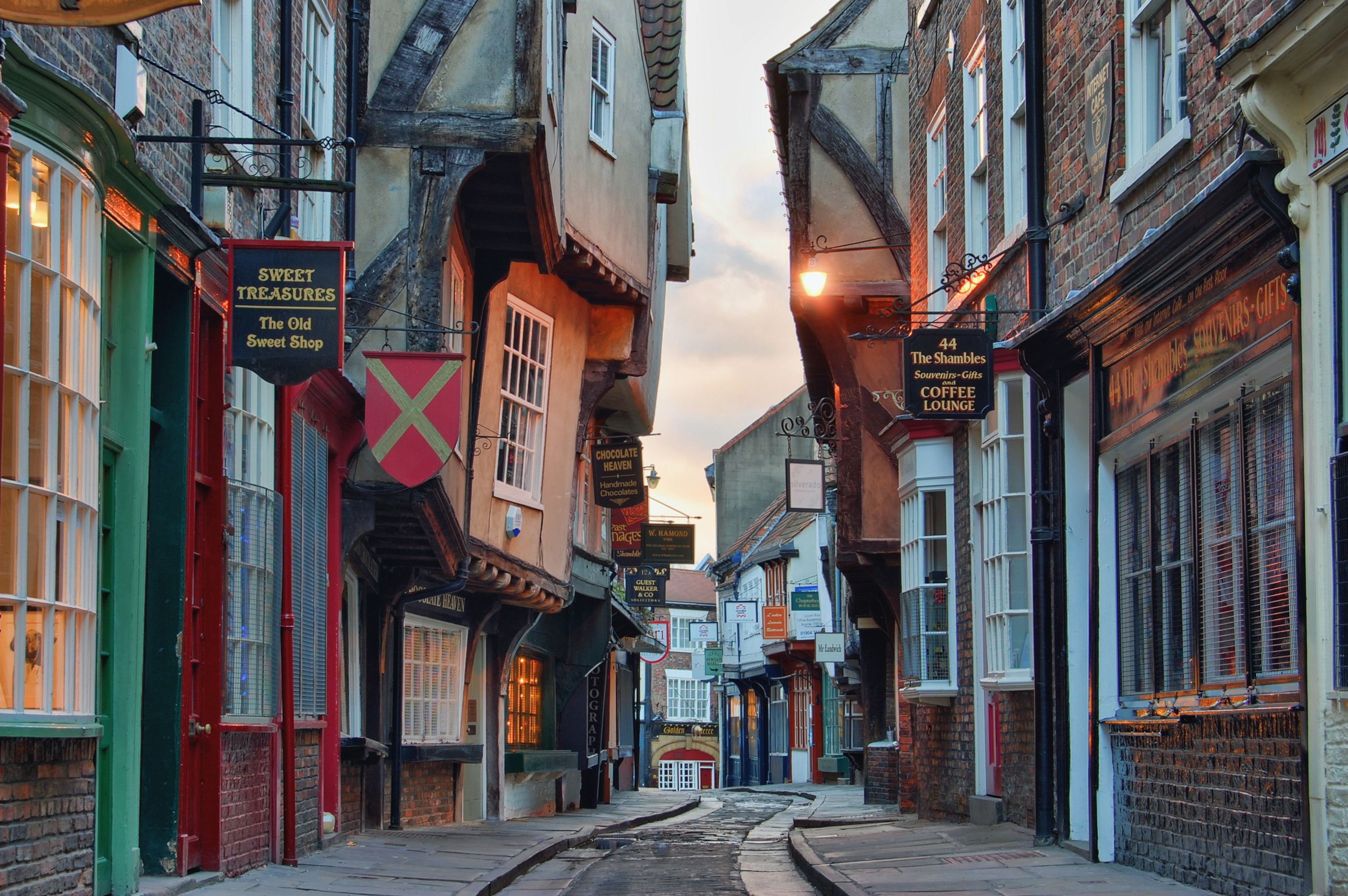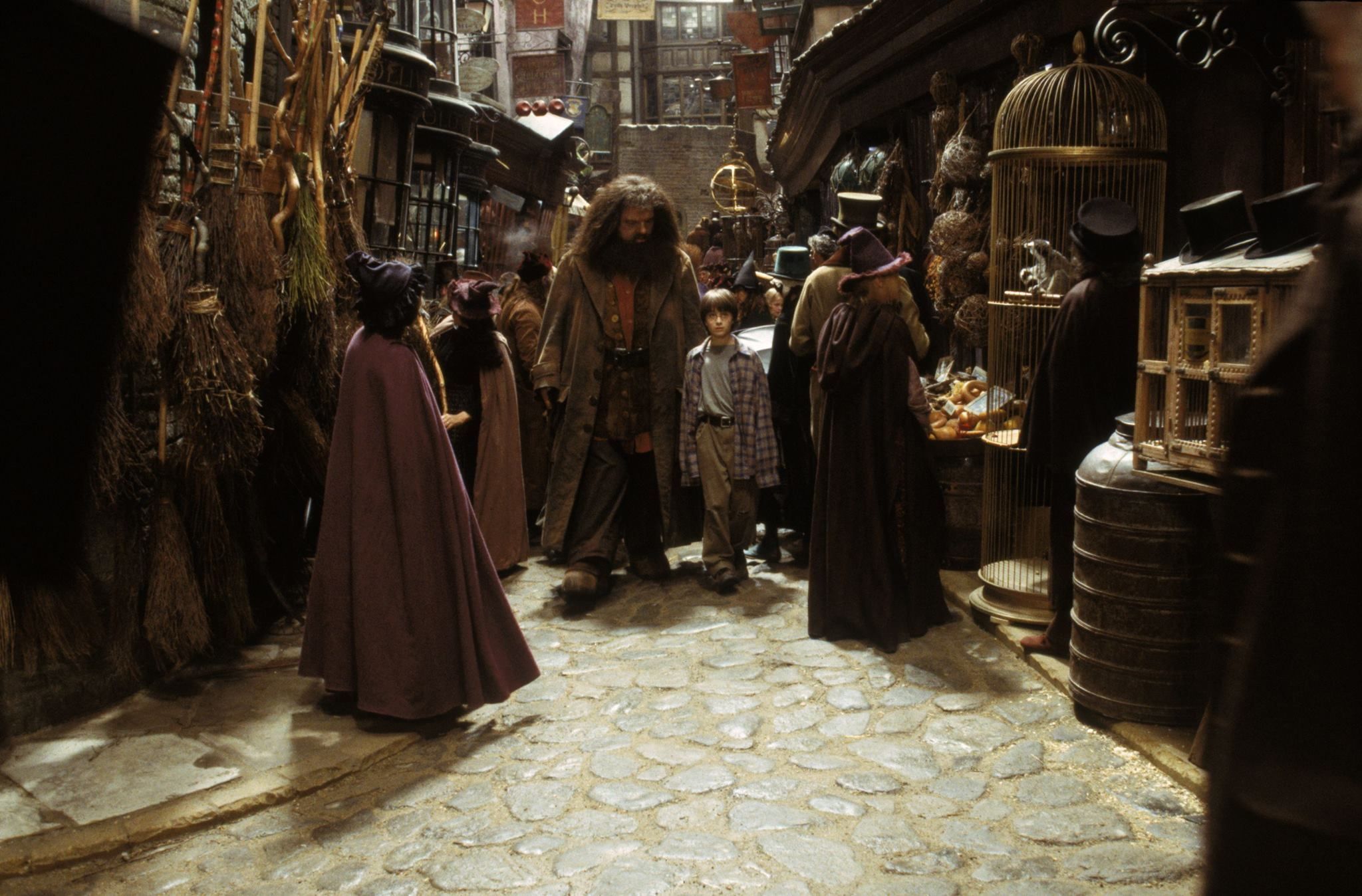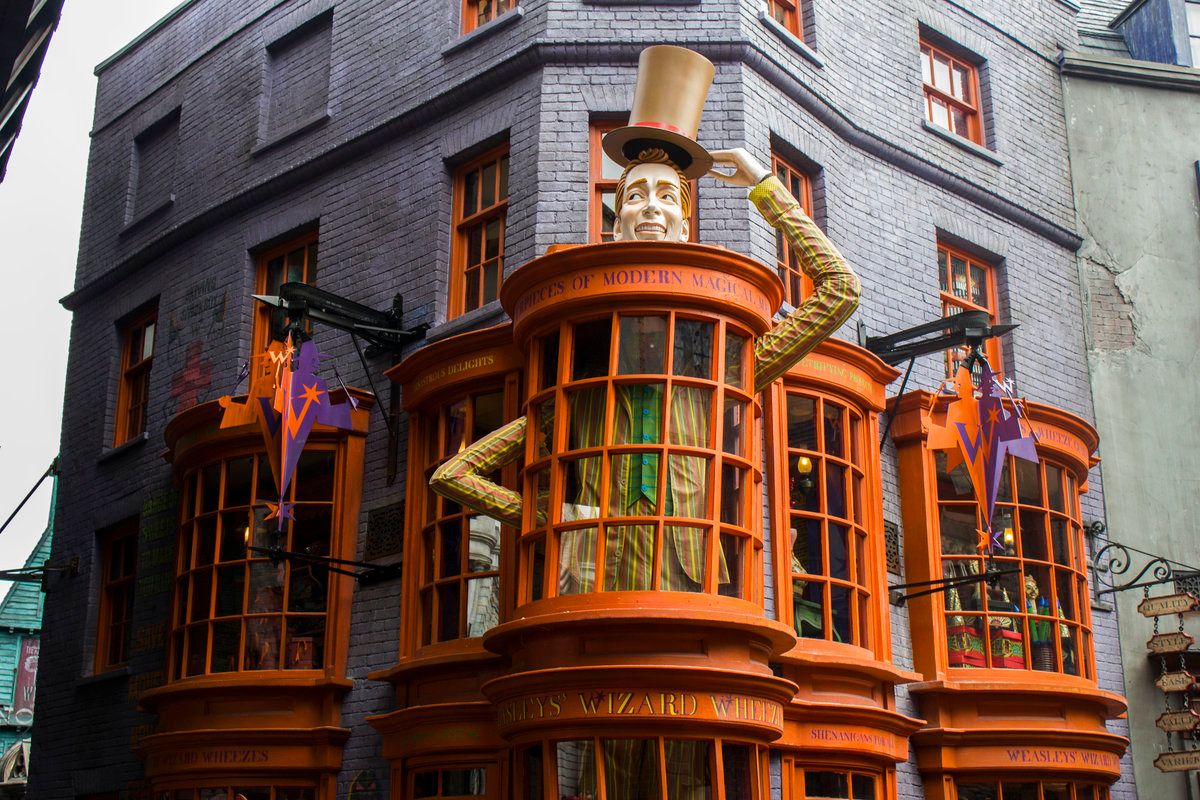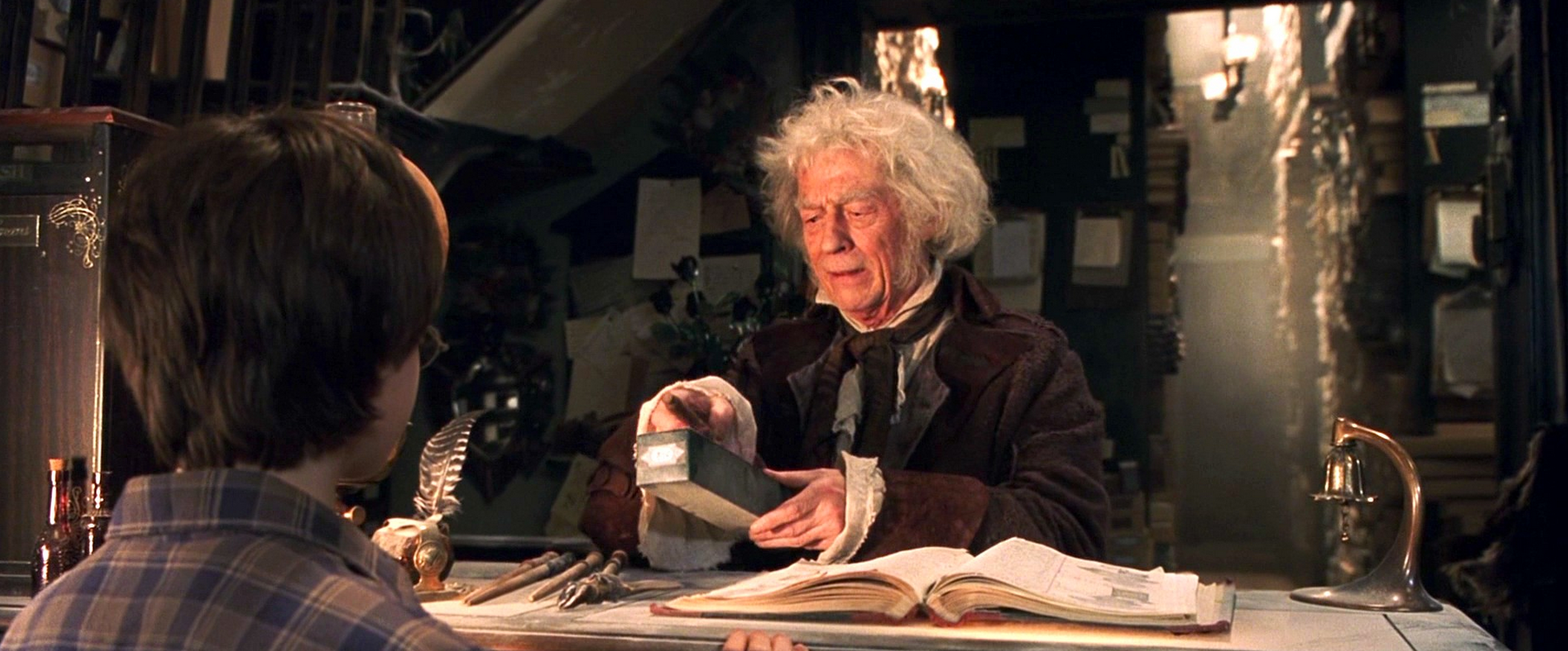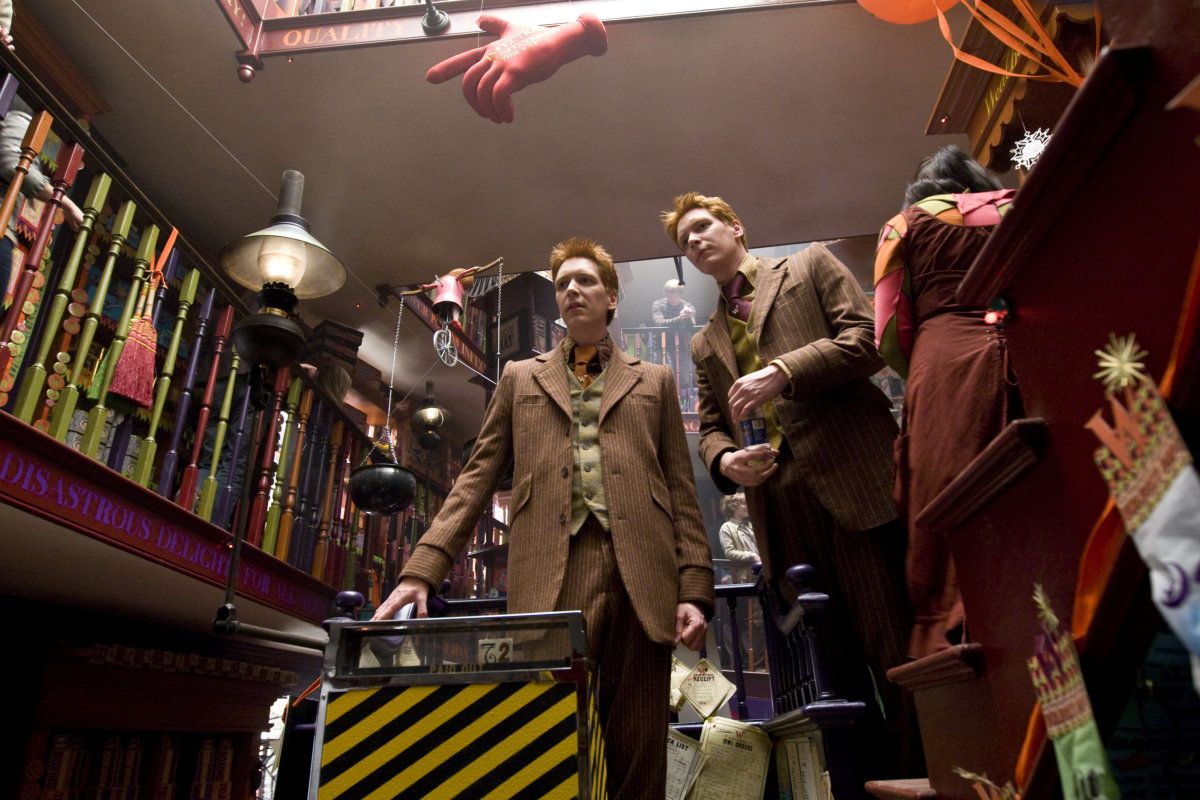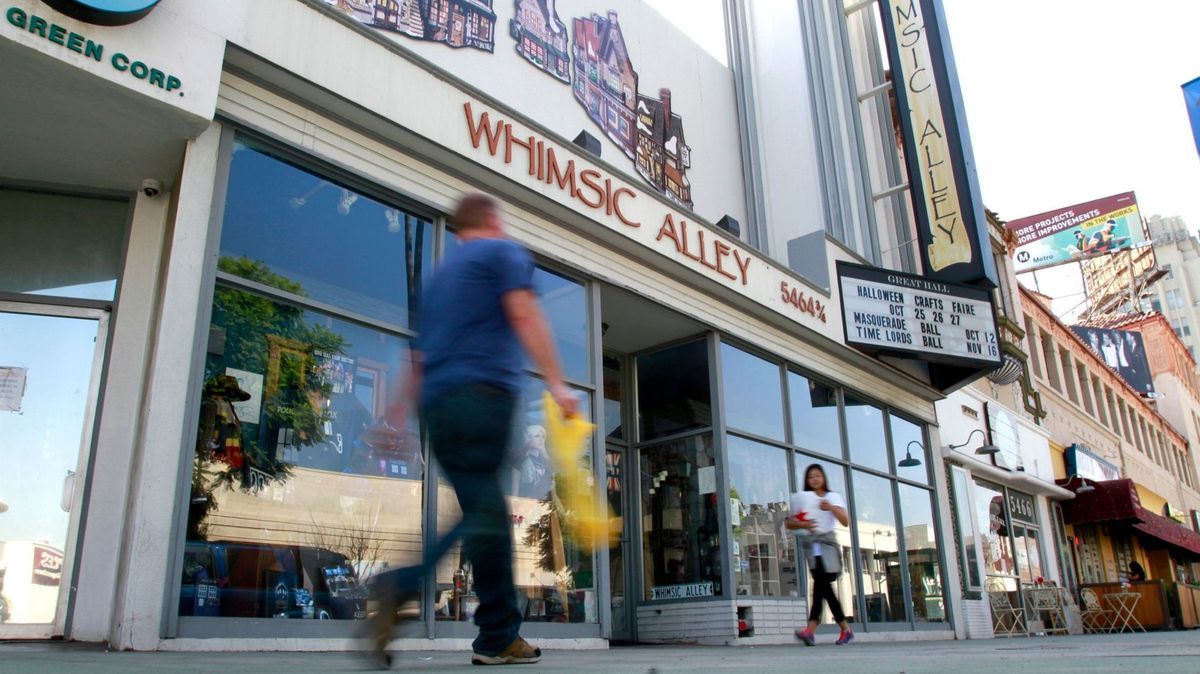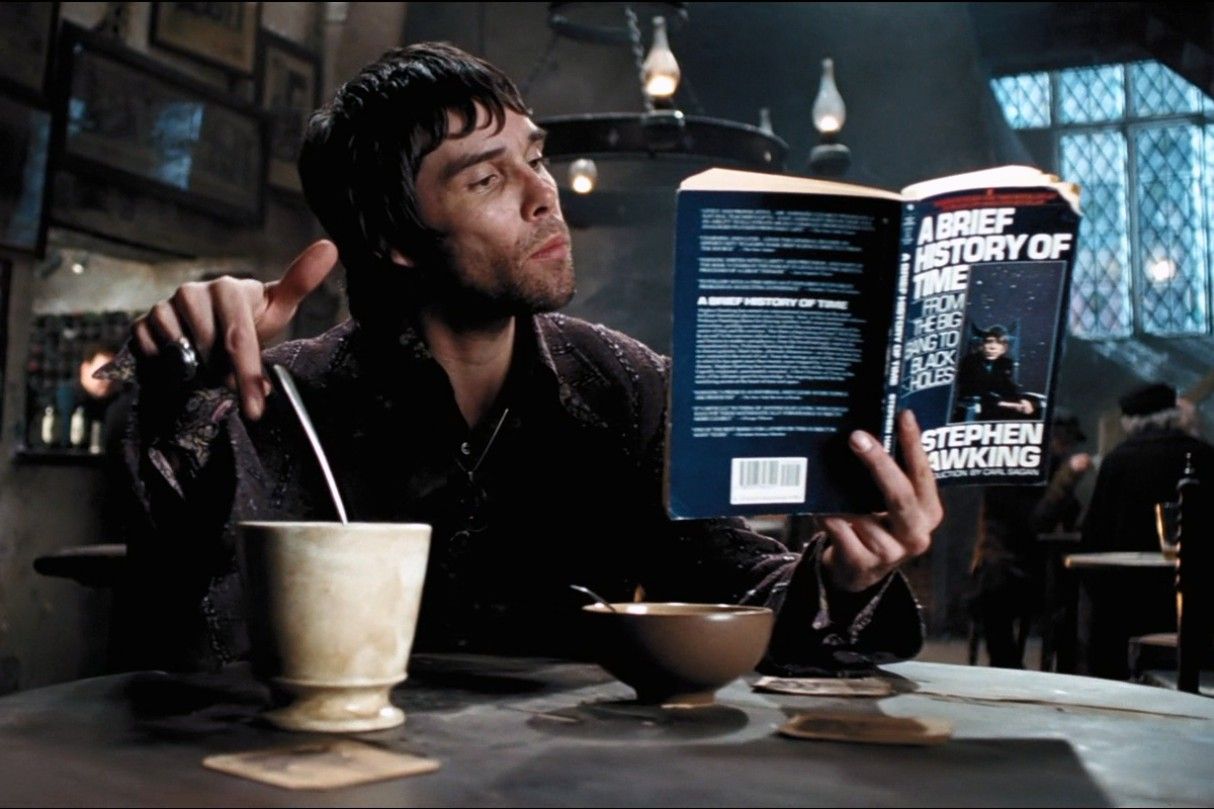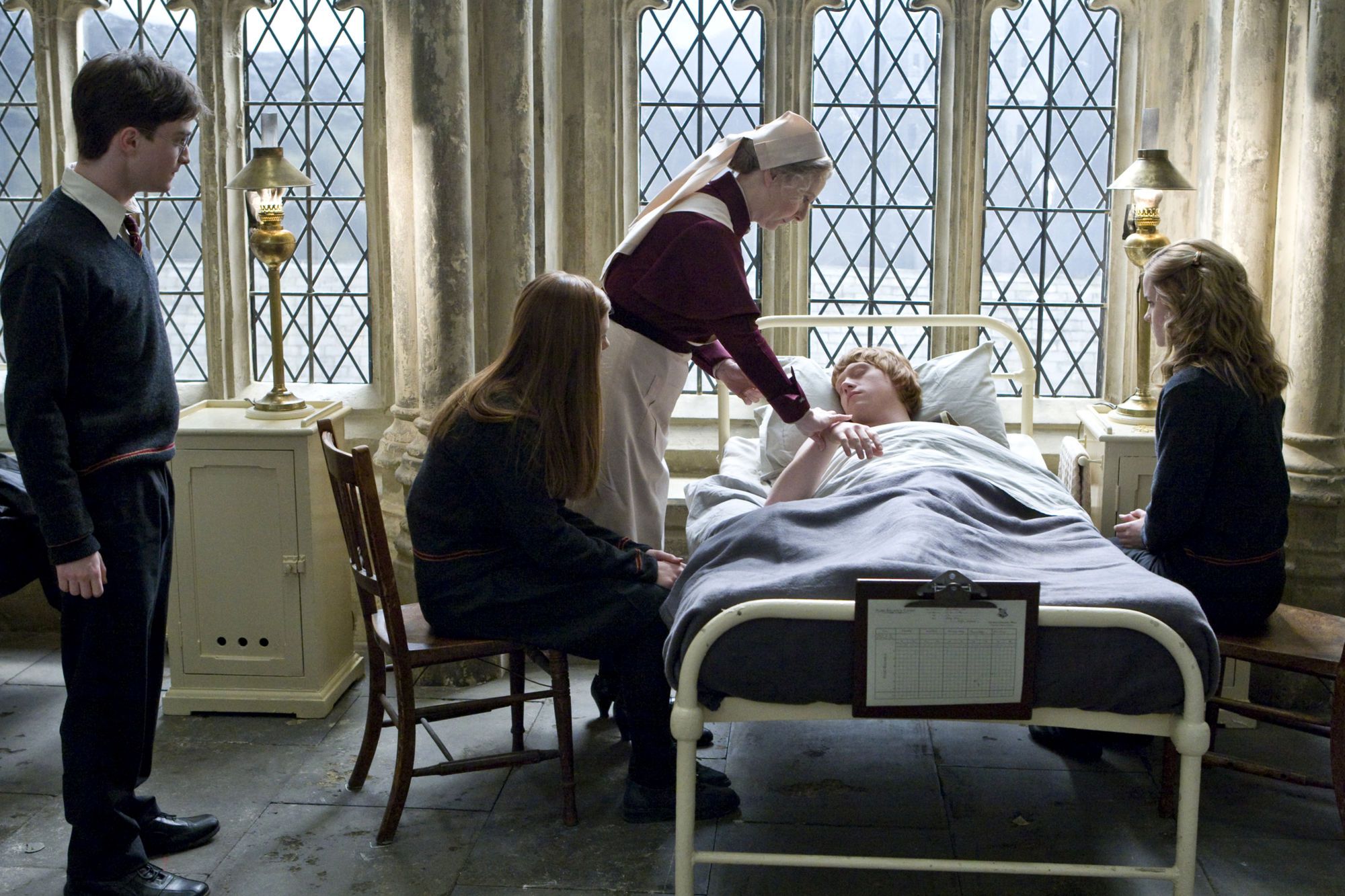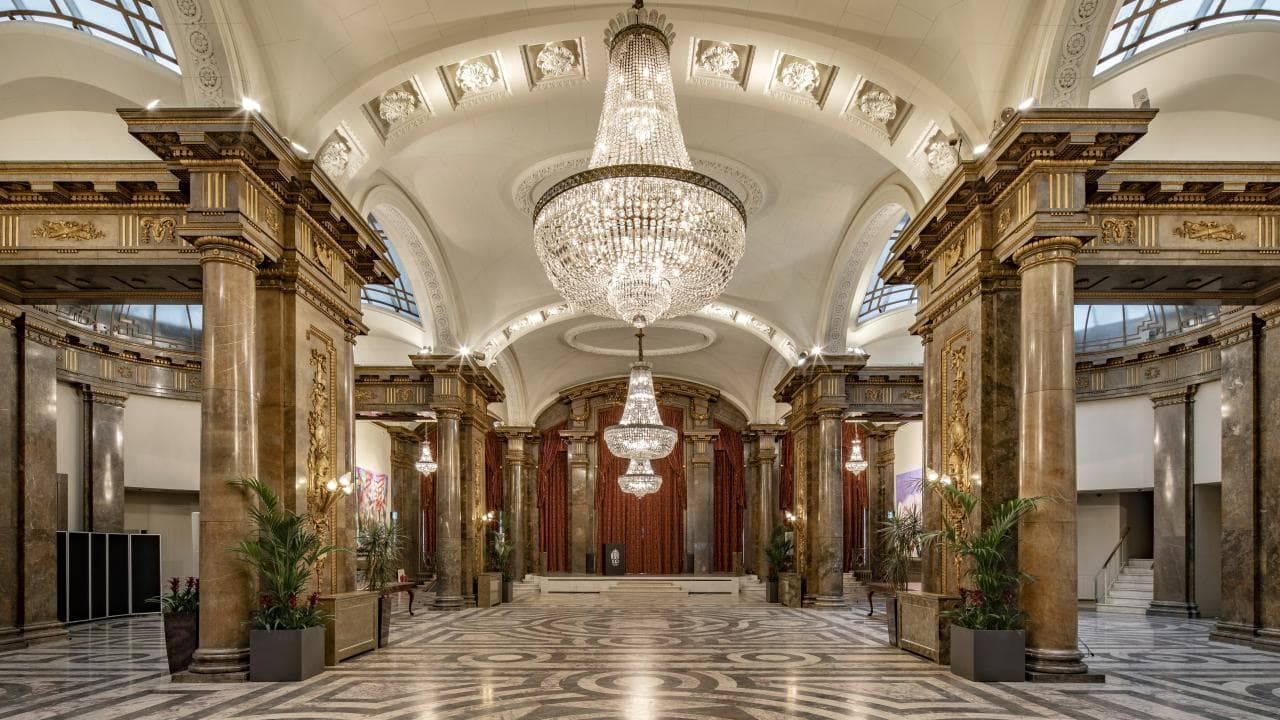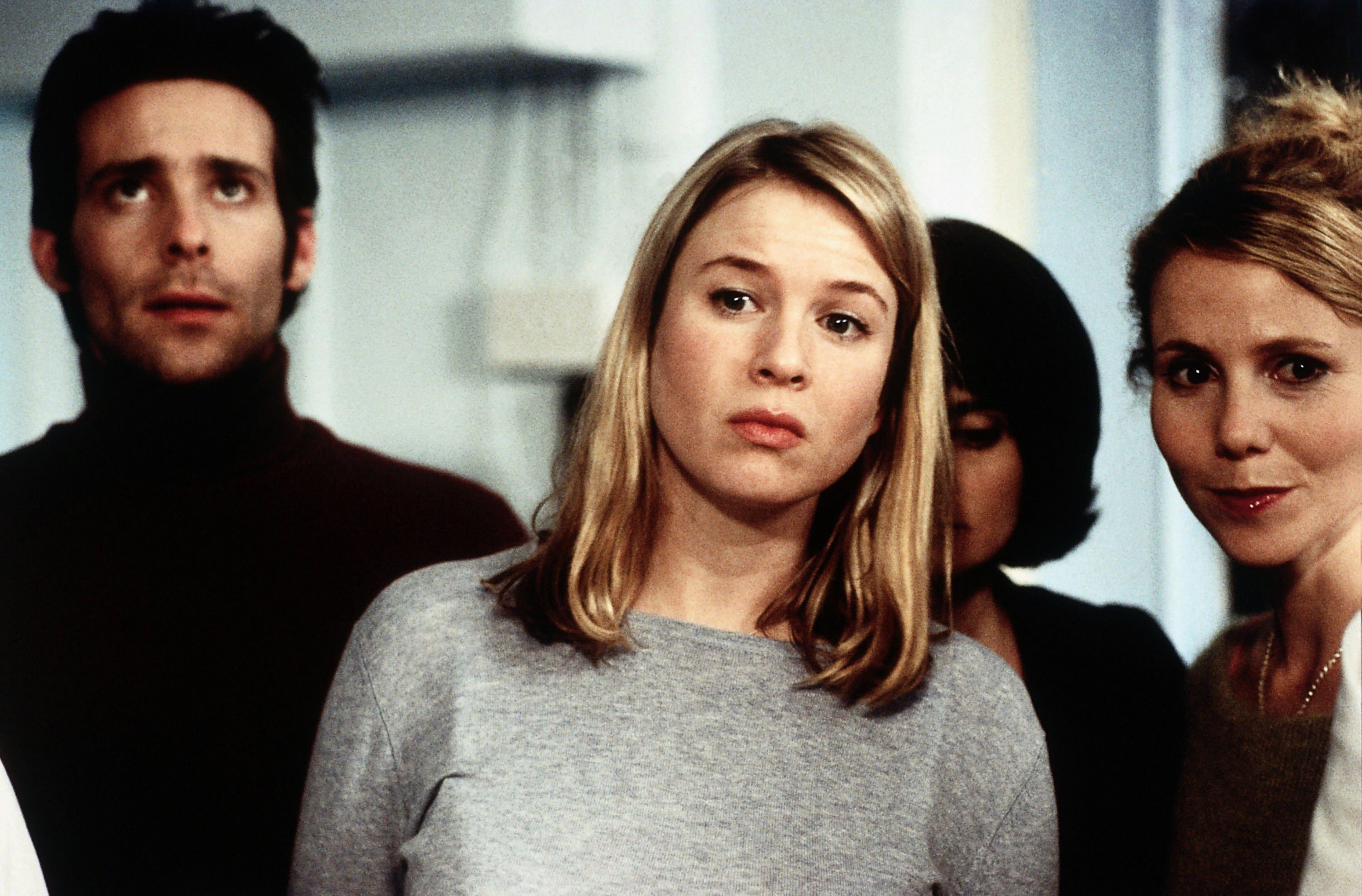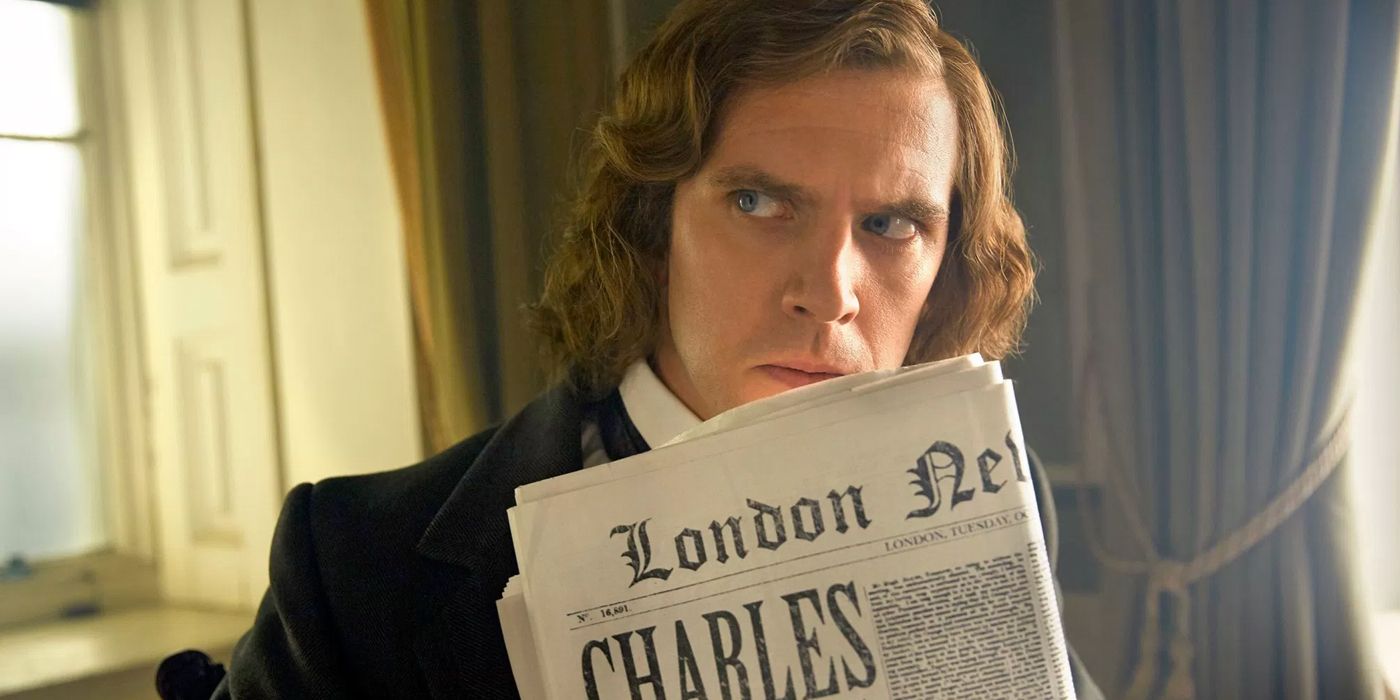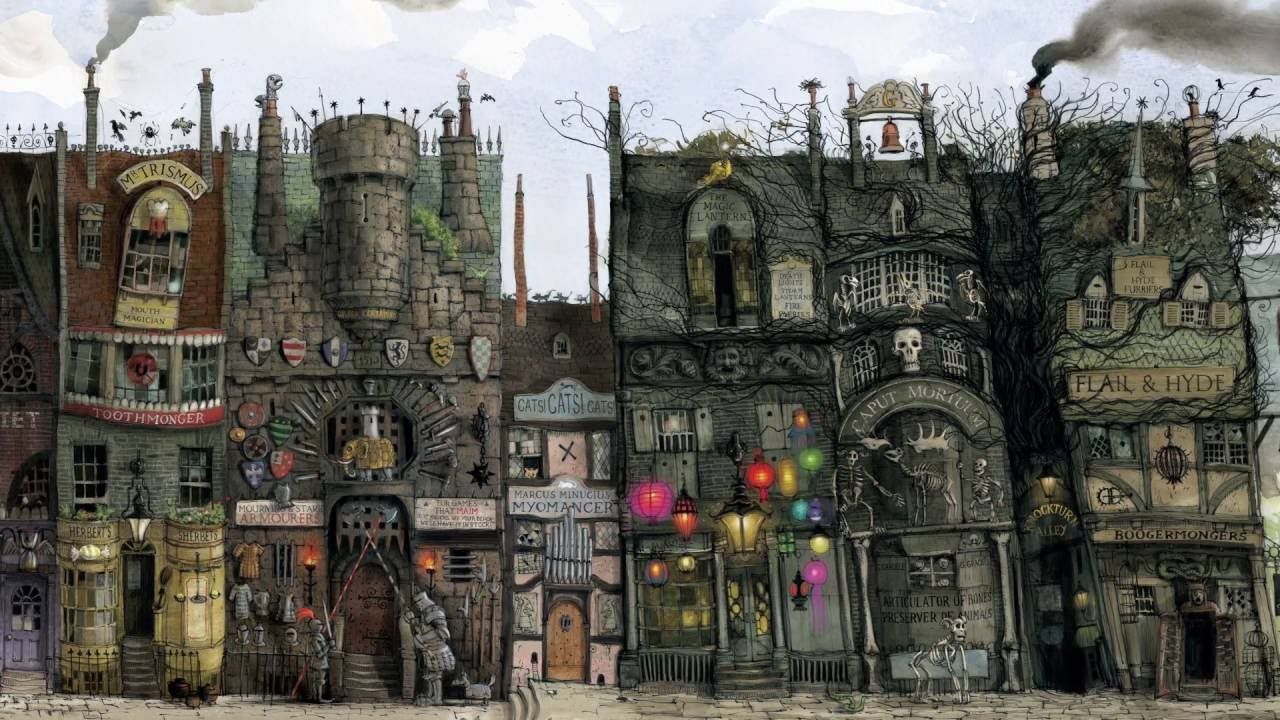Just off Charing Cross Road, behind the Leaky Cauldron, a witch or wizard only need tap a very particular brick three times to uncover a secret world. Behind this special wall is Diagon Alley, J. K. Rowling’s Wizarding World haven for shoppers.
Diagon Alley was a staple site in the Harry Potter series, with Rowling regularly returning her characters to its shops, emporium, and iconic bank. Here, shifts in mood reflected changing times, with posters of Azkaban’s most wanted appearing as early as book three and shops closing by book seven.
For the most part, though, Diagon Alley was a place for joy. This was the location that gave Harry Potter – and hundreds of millions of readers across the world along with him – his first experience of the Wizarding World. Here, Harry got his first wand, first met Hedwig, and first discovered he was the heir to a vast fortune.
Shops on the street range from purveyors of books, cauldrons and ice-cream to providers of tailoring, healing and fortune telling. You can even hide your illegal possessions, as the Malfoy family does, in the dingy corners of off-shoot street Knockturn Alley.
And yet, those facts are well known to even the most passing of Harry Potter fans. In this list, we’ve assembled the facts that only hard-core Potter fans know about Diagon Alley. Those secrets hidden within the pages of Rowling’s books and the films, theme parks and merchandise they inspired.
Without further ado, here are 21 Things Only True Harry Potter Fans Know About Diagon Alley.
Diagon Alley Sets Were Redressed For Hogsmeade
Not only can Harry Potter fans visit a recreation of Diagon Alley at Universal’s theme park, but it is also possible to explore the actual set that was used in the films. Restored and displayed at the Warner Bros. Studio in Watford, the set gives fans the opportunity to see the street’s shops for themselves.
But did you know that the canny production team behind Harry Potter and the Prisoner of Azkaban sought to save money by repurposing the Diagon Alley sets to create Hogsmeade, the Wizarding village just a stone’s throw from Hogwarts? All it took was a coating of Scottish granite on the old buildings, some roofing tweaks, and a sprinkling of snow. Magic.
Florean Almost Play A Larger Role
Florean Fortescue’s ice cream parlour was a must-see for those visiting Diagon Alley. Before his disappearance in the Second Great Wizarding War, that is. During Harry’s first visit to the street, Hagrid bought him a chocolate and raspberry flavoured ice-cream with chopped nuts there and, in his third, the parlour was where Harry did his homework.
In The Prisoner of Azkaban, it is revealed that Florean has a surprisingly extensive knowledge of medieval history. This alluded to a subplot that was originally supposed to come to fruition in the last book. Florean was to have helped Harry learn more about the elder wand and Ravenclaw’s diadem.
In the end, he didn’t make the cut.
Harry Potter Hardback Books Can Be Seen In The Chamber of Secrets
Here’s a cheeky Easter egg that only true Harry Potter fans will have spotted in the films. Specifically, in Christopher Columbus’ Harry Potter and the Chamber of Secrets, a stack of hardback Harry Potter books can be spied as Hagrid escorts Harry from Knockturn Alley.
It takes eagle eyes to spot them - especially considering how dark Diagon Alley’s murky sister street is - but books one to four in the series can be found on sale in a Wizarding bookshop.
We’d be prepared to bet that this isn’t the only time a J. K. Rowling book wound its way into the films so, next time you’re having a Harry Potter movie marathon, keep your eyes peeled.
The Hungarian Horntail Makes A Reappearance
Hungarian Horntails are said to be among the most dangerous dragons in the Wizarding World. Black scaled, yellow eyed and with a deadly flame throw of up to fifty feet, it was a Horntail that Harry had to face as his first task in the 1994 Triwizard Tournament.
In the film adaptation of Harry Potter and the Goblet of Fire, our first introduction to the Horntail is through a miniature – very realistic – model, given to Harry by Barty Crouch Snr. What you might not have noticed, however, is that this wasn’t the last time the model appeared in the films. Two films later, the micro-Horntail can be seen roasting chestnuts for a retailer in Diagon Alley.
Not that the Horntail is the only species of dragon in the Wizarding World, of course.
Where Did Harry’s Gringots Fortune Come From?
Harry Potter has so much money that he has no clue of its total value – in either muggle or magical currency. Indeed, it was only when, accompanied by Hagrid, Harry arrived at Diagon Alley’s wizarding bank Gringots that he learned of the vast fortune bequeathed to him by his parents.
Neither the books nor films ever actually explain how the Potter’s came by so huge a pile of galleons but – as true Potter fans well know – an explanation has been provided. According to J. K. Rowling, an ancestor of Harry’s, Linfred of Stinchcombe, launched a pharmaceutical business in the twelfth century and made it big.
Centuries later, Harry’s paternal grandfather Fleamont Potter quadrupled the family fortune with the invention of a hair potion – an advert for which can be caught in the opening newspaper montage of Fantastic Beasts and Where to Find Them.
You Can Exchange Muggle Money At Gringots
Sticking with Gringots, another surprising fact known only to true Harry Potter fans is that the bank’s many goblin-run services include foreign currency exchange. What this means is that muggles – such as Hermione’s parents – can switch their British pounds and US dollars for sickles, knuts, and galleons.
There are twenty-nine knuts in one sickle, and seventeen sickles make up a galleon, which is allegedly worth about £5 or $6.48. By that logic, a copy of The Daily Prophet – available for purchase on Diagon Alley – costs mere pittance at about five pence and ten cents. By contrast, the UK’s Daily Mail costs 70p an issue, with The New York Times at $2.50. Apparently, wizards really like a bargain.
Diagon Alley’s Shops Took A Lot Of Filling
With Diagon Alley being the go to location for general wizarding supplies, there’s very little that can’t be purchased in one of its many shops and emporiums. To make sure the Diagon Alley shops all appeared well-stocked, production designer Stephenie McMillan scouted antique shops, auction houses, and flea markets for gifts and goods.
As McMillan’s team were forbidden from revealing what the purchases were for, one crew member was noted to inform a shopkeeper that the reason she needed so many broomsticks was because she had a lot of sweeping to do.
On top of the goods that were bought in, a further 20,000 packages were produced by the props department to fill the Alley’s many nooks and crannies.
It Was Inspired By The Shambles in York… Or Was It Victoria Street?
By our reckoning, J. K. Rowling will have received at least fourteen inquiries after her inspirations for Potter before you’ve finished reading this sentence. She happily answers a huge number on Twitter alone. When it comes to Diagon Alley, however, dozens of locations across the globe seem to have been identified as the ‘real Diagon Alley’ over the years.
The internet’s two most popular candidates are York’s The Shambles and Edinburgh’s Victoria Street. Each one boasts historic architecture and an apt sense of magic but neither has ever been confirmed as the inspiration.
The Shambles is the more likely of the two. Dating back to the fourteenth-century, this cobbled, wonky street is even home to a Potter retailer: 'The Shop That Must Not Be Named'.
You Can Travel Down Diagon Alley On Google Street View
Strictly speaking, Google allows avid Harry Potter fans the chance to travel down three different Diagon Alleys, each in the UK. One, in Rotherham, is actually a retailer claiming to mimic the iconic street’s merchandising style. The second – in a sly reference to the inspiration debate above – is really Edinburgh’s Victoria Street.
It’s the real Diagon Alley we’re interested in though. By which we mean, the actual film set in Watford’s Warner Bros. Studio. Limited to just one stretch of the street – that leading up to Weasley’s Wizard Wheezes – the view only gives a small taste of the magic but, hey, it beats spying on an old photo of your own home any day.
Weasley’s Wizard Wheezes Wasn't The First Joke Shop Diagon Alley
When Fred and George Weasley made their spectacular exit from Hogwarts in Harry Potter and the Order of the Phoenix – much to the consternation of Dolores Umbridge – they made a beeline for Diagon Alley. There, they founded Weasley’s Wizard Wheezes, the joke shop so popular that even war couldn't close it.
But, as only true Harry Potter fans will remember, Weasley’s Wizard Wheezes wasn’t the only joke shop in the Alley. Mentioned as early as the second book, Gambol and Japes was the Weasley’s own go-to joke retailer. While Gambol and Japes never made it to the films, the video game version of Harry Potter and the Chamber of Secrets gave fans the chance to explore.
Olivanders Is Seriously Old
Wandcraft runs deep in the family history of Garrick Ollivander, the elderly wandsmith who Harry Potter first meets when buying his own wand in The Sorcerer’s Stone. Even the name ‘Ollivander’ derives from the meaning ‘he who owns the olive wand’. As for his shop in Diagon Alley – the family business he ran for over six decades – Ollivanders is very, very old.
According to the sign on the shopfront, Ollivanders was founded in 382 B.C. Yes, wands have been sold by the business for well over a thousand years, with its origin predating Rome’s Colosseum and most of the Great Wall of China. Just think how many wands must have been produced in that time…
George Reopened Weasley’s Wizard Wheezes After The Second Wizarding War
The Weasley’s suffered hard in the course of the Second Wizarding War. While George lost his ear – in the mission to escort Harry from Privet Drive – Fred lost his life in the fallout from the explosion of Hogwarts’ Room of Requirements. Following such tragedy, you might have expected Fred and George’s Diagon Alley joke shop to have faced a bleak future. You would be wrong.
Not only did George reopen Weasley’s Wizard Wheezes after the war but, according to J. K. Rowling herself, Ron later joined him and business boomed. The business branched out, buying Zonko’s in Hogsmeade and Fred’s legacy would live on, with George naming his own son after the twin brother he still loved and always mourned.
Warner Bros. Closed Down LA’s Diagon Alley
Whichever street inspired J. K. Rowling to create Diagon Alley, the Alley itself has inspired many a shop and copy. One such establishment could - until 2017 - be visited by Potter fans in Los Angeles. Whimsic Alley – named as a play on ‘whimsically’ – deliberately mimicked Diagon Alley, whilst selling merchandise based on the Potter franchise.
Events were held in the shop’s Great Hall, whilst fake shop fronts – styled after Diagon Alley – were created for the interior. A magical experience was promised to all those who entered.
Selling all things magical, Whimsic Alley was sued by Warner Bros. in 2013 for infringing on Harry Potter copyright. It was, however, the opening of Universal’s Harry Potter theme three years later that really ended the brand.
The Leaky Cauldron Sells A Drink So Disgusting, No One Has Ever Finished A Pint
It would be hard to successfully argue that The Leaky Cauldron is a cosy establishment. Certainly, compared to Hogsmeade’s warm and welcoming Three Brooksticks, Tom’s dusty old haunt falls short. Very short. One notable attraction The Leaky Cauldron does boast, however, is Gamp’s Old Gregarious.
As all true Harry Potter fans know, Gamp’s is a drink said to be so disgusting that nobody in the five-hundred-year history of the Cauldron has ever been able to finish a full pint. The challenge isn’t without incentives, though. Any witch, wizard, or muggle who is able to completely empty a pint of Gamp’s Old Gregarious will win themselves a one hundred Galleon prize.
You Can Get Healed For Free
There are two sites in the Harry Potter books that J. K. Rowling named as places witches and wizards can go to when ill or injured. When Harry breaks his arm in The Chamber of Secrets – and Gilderoy Lockhart causes them all to disappear – he goes to Madam Pomfrey in the Hogwarts Hospital Wing. When Arthur Weasley is attacked by Nagini, meanwhile, he winds up in St. Mungo’s.
What you may not now, however, is that it is possible to bypass hospital treatment all together by getting a free healing in Diagon Alley. In the video game adaptations of the first two Harry Potter films, an unnamed altruistic healer can be visited in Diagon Alley.
Gringotts Was Filmed In Australia House
Founded by Gringott the goblin in 1474, Gringotts is the Wizarding Bank’s premier bank and can be found on the north side of Diagon Alley. While later in the film series, Warner Bros. had a full set built to represent the bank, originally a suitably sumptuous location was sourced by the production crew and found in London’s Australia House.
A Grade II listed building, dating back to 1913, Australia House is the UK home of the Australian diplomatic mission. Deemed perfect for Gringotts, the building was gifted some extra production flourishes for filming. Desks were created for the goblins and lined the hall, which was stocked up with ledgers, quills and thousands of Wizarding coins.
Mr. Mulpepper’s Apothecary Boasts Some Huge Furniture
While J. K. Rowling’s conception of Diagon Alley likely stretched far beyond the handful of shops name-checked in her books, the production team behind The Sorcerer’s Stone had plenty of fun creating their own to expand their set. Mr. Mulpepper’s Apothecary was one of these unique creations.
Within this – only briefly spotted on screen – set, a cupboard could be found, with shelves ten feet long and twenty-four feet high. This was a structure so huge that only one person at a time could dress it for shooting.
To boot, in order to fill the shelves, said person would have to climb into a cherry picker. Just another example of where wingardium leviosa would have come in useful.
Bridget Jones Is A Leaky Cauldron Regular (Presumably)
Okay, so we’re going out on a whim here but stick with us. Two locations were used for the Leaky Cauldron in the Harry Potter films. Both are, by strange coincidence, in old London markets and can be visited by true Wizarding World fans free of charge to this very day.
The first would-be Leaky Cauldron is in London’s Leadenhall Market, a fourteenth-century covered arcade that has also provided location sets for the likes of The Imaginarium of Doctor Parnassus and Hereafter.
The second location is the even older – dating back to 1014 – Borough Market, the fresh food haven on London Bridge. On the very same London road that the films’ Leaky Cauldron can be found on is Bridget Jones' flat. Stands to reason that she’d frequent the local on lonely Valentine’s nights.
Charles Dickens Inspired The Set
While J. K. Rowling had her own real-world influences in the creation of Diagon Alley for the books, when it came to the films, the Potter production designers dived back into literary history for inspiration. Specifically, images and ideas were sourced from the acclaimed fiction of Victorian writer Charles Dickens.
Dickens – who wrote Oliver Twist, Great Expectations, and A Christmas Carol, among many other classics – gave the film Diagon Alley its crooked aesthetic. Looming, ye olde streets described in Dickens’ books were sourced to add magic to the nineteenth-century styled buildings that populated the sets. Naturally, among the most relevant of Dickens’ works to the design was The Old Curiosity Shop.
Jim Kay Created His Own Shops For The Illustrations
While it’s not uncommon for publishers to produce regular redesigns of book covers to refresh their brand – and entice completists to rebuy the books they already own in the process – Wizarding World bigwigs went all out when they decided to republish the Harry Potter series in illustrated editions.
When it came to illustrating Diagon Alley, limitations in Rowling’s description of the street led British artist Jim Kay to fill in some gaps with shops of his own invention. Among Kay’s creations were mouth magician Mr. Trismus, Marcus Minugius’ Myomancer, and Flail & Hyde Furriers.
Kay’s shops aren’t all his own, of course, and next to Caput Mortuum – ‘preserver of animals – can be seen the entrance to Knockturn Alley.

